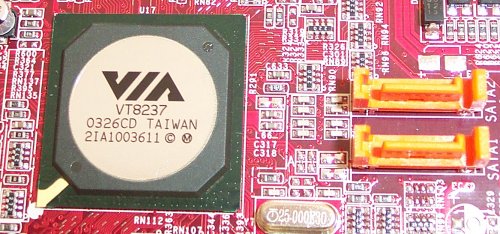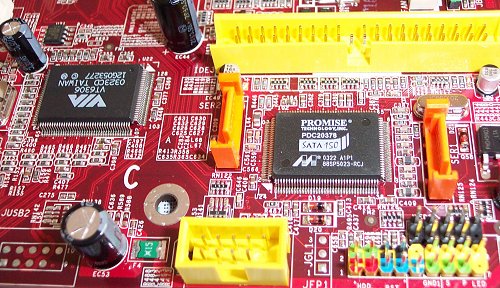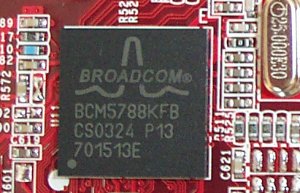Layout and features

The first aspect that caught our reviewing eye is that this motherboard is approximately 1cm narrower than most. That caused a slight problem in mounting it into a standard case, because the outer mounting holes didn't align correctly with the motherboard's standoffs. The middle holes allowed it to be secured to a chassis, but the lower portion of the board was free to move around. Kind of strange as to why MSI didn't just manufacture this as a standard 244mm board. The deluxe nature dictates that it's a busy-looking board, chock-full of features.

The first disappointment, from an enthusiast's point of view, arrives with the knowledge that the KT6 Delta has no mounting holes surrounding the socket. That causes a number of high-performance coolers and waterkits to be ruled out immediately. As you'll later see, MSI's BIOS caters for the enthusiast, so the rationale behind leaving out socket mounting holes is a mystery. MSI continue to be a manufacturer who simply insist on having a fan on its boards' North Bridges. The latest incarnation of these annoying fans contain LEDs, presumably for the windowed case crowd. The 4-pin 12v connector is located some way down the board, such that PSUs with shorter wires may have to run their wiring directly over the heatsink and fan. A 3-phase power supply should keep AMD's CPUs relatively happy with steady voltage.
We're always happy to see occasions when system RAM can be inserted and removed without having to remove the AGP card. This move is facilitated by having 5 PCI slots. The AGP slot effectively moved down the board to replace usual position of the missing PCI slot. The DDR area contains the usual ports and the 20-pin ATX power connector. The KT600 is a single-channel chipset, so three DIMM slots can provide up to a maximum of 3GB of system memory. DDR400 running, though, requires that a maximum of 4 banks can be filled. MSI's CoreCell technology provides a nifty method of defining and manipulating certain system attributes. It can be used to overclock the board from within an OS environment, control the fans' speeds, reduce power consumption and increase reliability. The last point seems a little dubious.

The features' fun starts a little lower down on the KT6 Delta. Perhaps the greatest improvement in the KT600 design is highlighted by the new VT8237 South Bridge. This S.B should have been specified on a number of KT400A models, but it's finally graced the KT600. A look back at our initial KT600 look shows that it has, much like Intel's ICH5, the ability to run SATA inherently. It goes a step or two further by allowing basic RAID and another 2 SATA ports to be connected via a physical layer, bringing the total to 4. Other goodies include 8 USB2.0 ports, decent sound CODEC, and a 1GB/s link to the N.B. This would be enough for most motherboards, MSI doesn't agree.

More SATA and PATA, would you believe. Promise's hybrid PDC020378 controller amalgamates both standards from one chip. A single ATA133 port allows two PATA drives (Master and Slave) to run in either RAID0 (striping) or RAID1 modes. The same can be said for two SATA drives, one each port. However, you can combine both interfaces to have up to 4 drives running either RAID0 or RAID0+1 (striping and mirroring). The PCI-based controller will inevitably limit the maximum transfer speed of the SATA standard, but we've yet to see a drive that'll hit 150MB/s for sustained periods. Perhaps MSI decided to go with the Promise controller and not VIA's expandable SATA PHY for IDE RAID reasons. VIA's very own VT6306 3-port FireWire controller is present. 3 associated ports, coloured green, sit just below. The accompanying bracket provides use for all 3 ports.


BROADCOM further tax the PCI bus with its single-chip Gigabit Ethernet controller, and CMI's 6-channel 9739A CODEC is a welcome addition. It's a shame that no S/PDIF cable support is provided with this package. The header is close by.

No less than 6 USB 2.0 ports on the back panel. Everything else is standard for a modern motherboard. Another fan header to complement the 2 usable on-board points, FireWire integrated to the back panel and mounting holes around the socket would have made it that little bit better.









